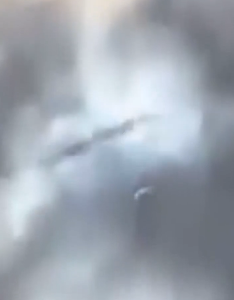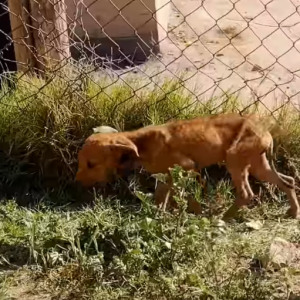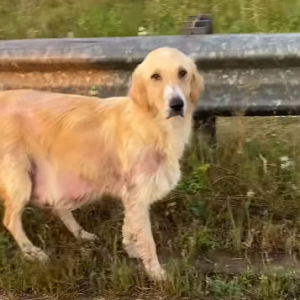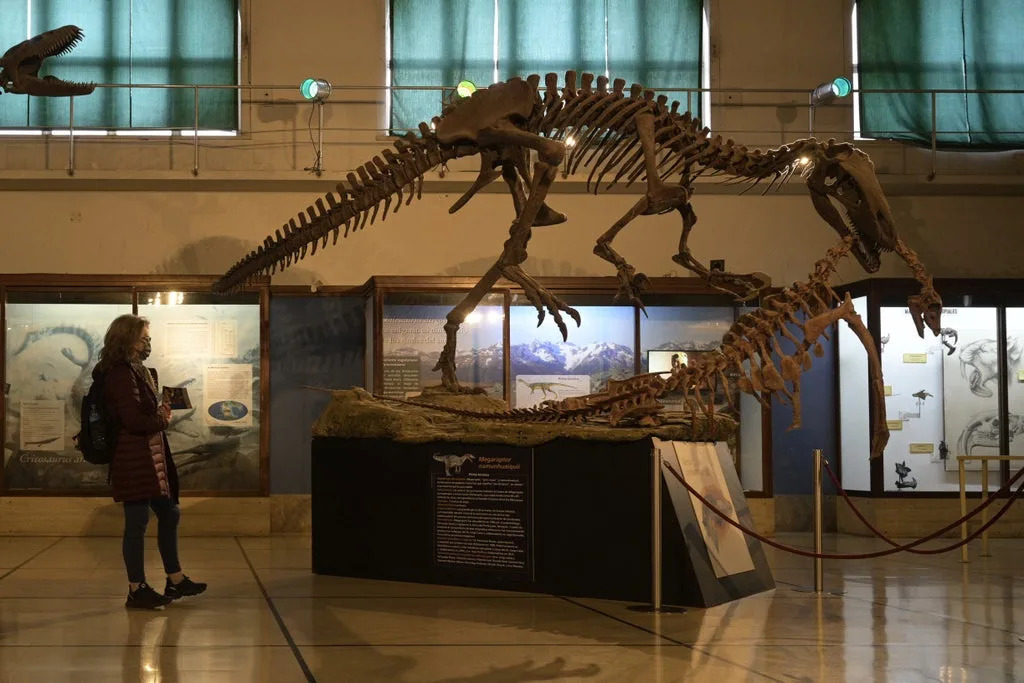
Giant 32-feet-long ‘death shadow’ dinosaur discovered by scientists in Argentina
A 32ft (9.5m) “death shadow” dinosaur that may have been the apex predator of its time about 70 million years ago has been discovered by scientists in Argentina.
The dinosaur is the largest “megaraptor” found to date and was discovered based on fragmentary bones excavated from Santa Cruz province, Patagonia (Argentina), said researchers in the journal Scientific Reports published on 26 April.
The new dinosaur, Maip macrothorax , is named after the legend of “Maip”, an evil spirit said to roam the Andes. Its name means “the shadow of death” which “kills with cold wind,” scientists said.
The dinosaur had two sharp curved claws in each front paw with the talons some 40cm (15.7in) long, AFP reported.
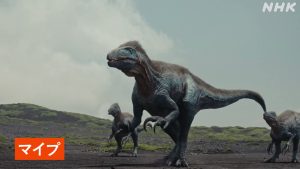
The megaraptor’s specific name macrothorax, scientists said, is from the Latin for big thorax and is based on fossil evidence that indicated this dinosaur was deep-chested with a large thoracic cavity more than 1.2m (3.9ft) in width.
Researchers, including Alexis M Aranciaga Rolando from the Bernardino Rivadavia Museum of Natural Science, assessed fossil remains of the dinosaur, representing only a small portion of its overall skeleton, such as a few sections of backbone, ribs, a partial toe bone and fragments of the shoulder blade.
By studying these bones, paleontologists said the megaraptor may have been a member of the Coelurosauria dinosaur clade (group) that later gave rise to birds.
They said the dinosaur likely lived about 70 million years ago towards the end of the Cretaceous period in a tropical forest before the formation of the Andes mountain range and its glaciers which now mark Patagonia.
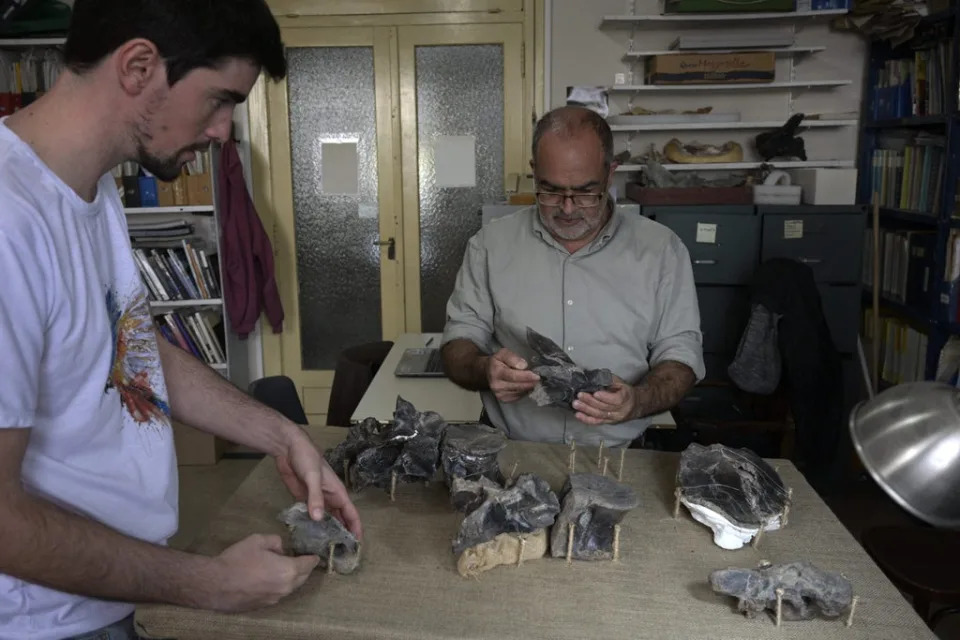
Argentine paleontologists Mauro Aranciaga (left) and Fernando Novas check fossilised bones of ‘Maip macrothorax’, the newly identified megaraptor dinosaur that inhabited the Argentinian Patagonian, at the Bernardino Rivadavia Argentine Museum of Natural Science, in Buenos Aires on 2 May 2022 (AFP via Getty Images)
The humongous size of these raptors may have been due to the extinction of the dinosaur group Carcharodontosaurids, many of which were apex predators on the southern continents.
Researchers said the megaraptorids – a group that includes giant sized raptor dinosaurs – likely evolved, eventually becoming larger, heavier and more robust, filling this vacant niche of top-predator in many parts of the Southern Hemisphere during the Late Cretaceous.
This was likely following a global extinction event about 94 million years ago that led to the demise of Carcharodontosauridae dinosaurs.
With the absence of apex predators, scientists said the megaraptorids evolved to fill this niche in the Southern Hemisphere, while the tyrannosaurids family, which includes the T.rex, became bigger and occupied this role in Asia and North America.
Before the extinction of Carcharodontosaurids, the body size in the Megaraptoridae was limited to around six metres in length, but likely increased to an excess of 10m at the very end of the Cretaceous.
While the uncovered bones represent only a small part of the dinosaur’s total skeleton, and no cranial material has been identified, scientists said Maip macrothorax is still the most informative megaraptor known from this stage of dinosaur evolution.
They said Maip was one of the last megaraptors to live on Earth before the extinction of dinosaurs and also the southernmost megaraptor ever found.
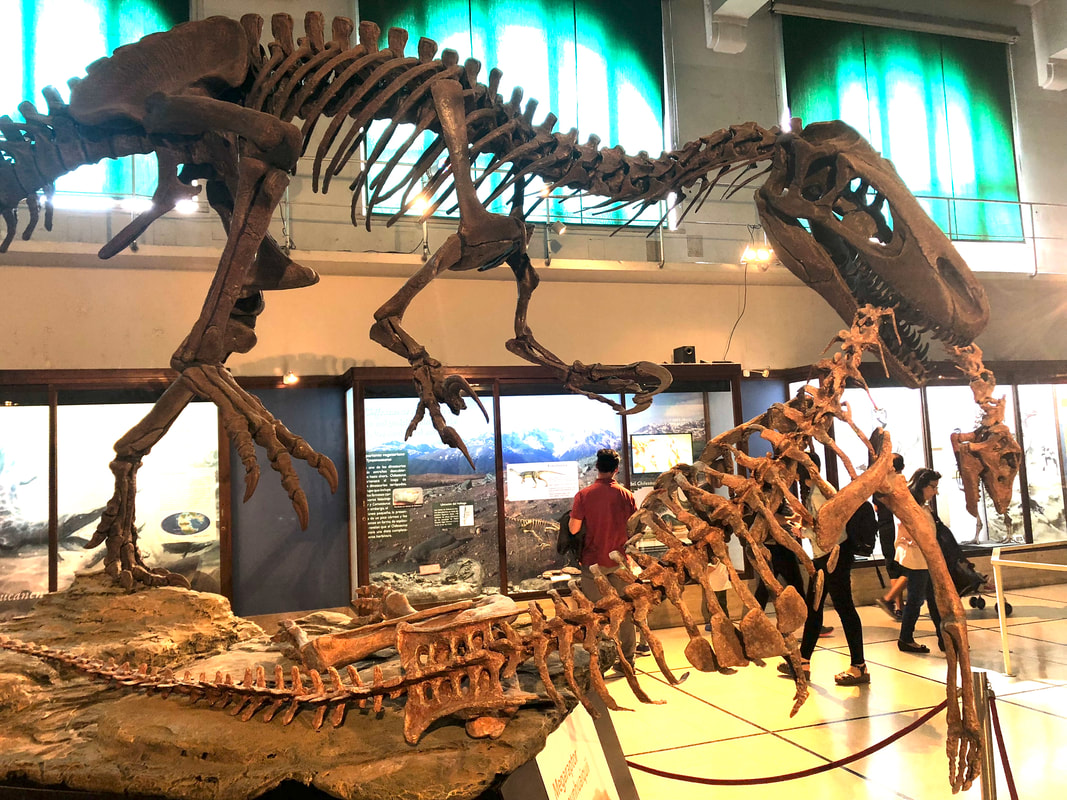
Megaraptor namunhuaiquii tucking into Macrogryphosaurus gondwanicus at the Museo Argentino de Ciencias Naturales in Buenos Aires
By the time I started high school, I had already wanted to be a palaeontologist for almost a decade. With the internet not really being a “thing” back then (at least not in my parents’ house), I lapped up any fossil stories that made the news; however, back then I was not in the habit of reading the newspaper much myself. Instead, I have my grandma to thank for helping me to keep abreast of the latest news. Every day she would read the newspaper from cover to cover, and if she found anything palaeontological, she would cut it out, write the date and the name of the paper on it, and give it to me whenever she next saw me. Although Grandma passed away more than fourteen years ago, I still have the books in which I glued all the clippings she gave me. I never intend to part ways with them — they are testament to the support she gave me in pursuing a palaeontological path, and I probably would not be anywhere near where I am now without her encouragement. So strong was the influence she had on me that I dedicated by Ph.D. to her memory.
If I remember correctly, it was in one of the clipping that Grandma gave me, back in 1998, that I first found out about a new Argentinean theropod dinosaur. It had been given a very evocative name — Megaraptor, or “big plunderer” — and I could only imagine what it would have looked like as a living animal. The article even had an artist’s impression of the animal, which made it look like a scaled-up Deinonychus or Velociraptor. This was because, based on the bones at hand, Megaraptor had been interpreted as having a huge, sickle-like claw on its foot. Oh, how times have changed since then…
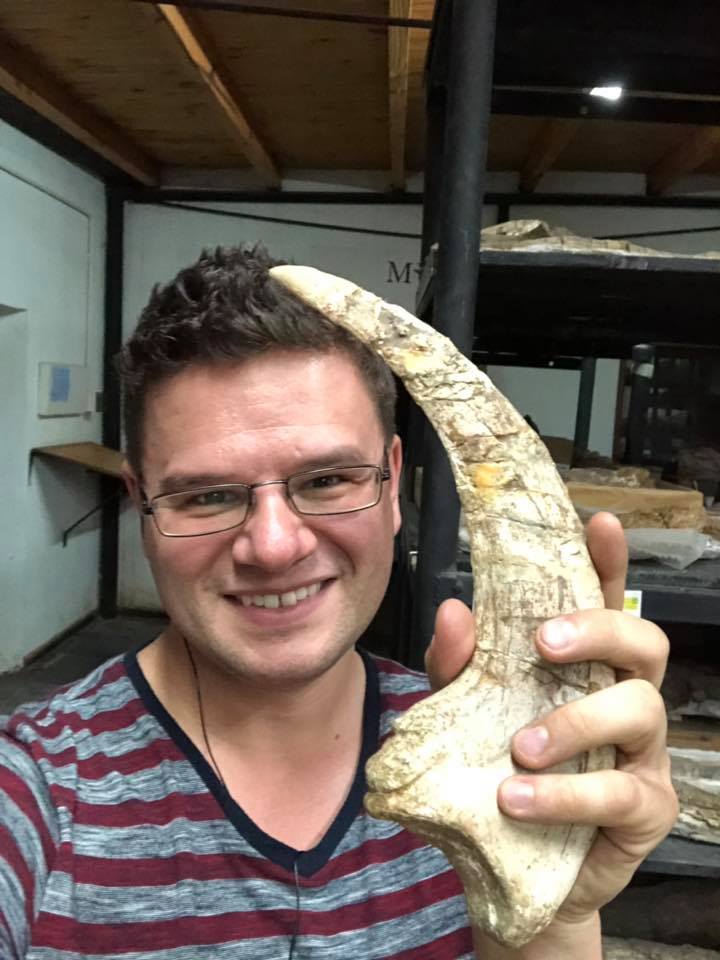
Me holding the original Megaraptor namunhuaiquii claw! Every time I picked it up I was terrified I would break it; thankfully I didn’t!
From the top
The type specimen of Megaraptor namunhuaiquii was collected from the Portezuelo Formation by a National Geographic Society-backed field crew, led by Fernando Novas. Novas named and described Megaraptor in a 1998 paper in Journal of Vertebrate Paleontology, and it is fair to say it sparked a media frenzy. The new theropod was not known from much material: an ulna (forearm bone), a manual phalanx (finger bone), an incomplete metatarsal (upper toe bone), and a claw. However, in terms of scale, the claw was practically off the charts: at almost 34 cm long, measured along the outer curve, it was gigantic. Novas compared the specimens with other theropod dinosaurs and determined that the claws on the second toes of dromaeosaurs and troodontids were most similar to that of Megaraptor. However, he also noted similarities between the ulna and those of more “primitive” theropods, and between the metatarsal and those of more “advanced” theropods called coelurosaurs. In the end, Novas conceded that robustly placing Megaraptor on the theropod family tree was not really possible based on the evidence at hand. As such, he classified it tentatively as a coelurosaur that had possibly converged with troodontids and dromaeosaurs by evolving an enlarged claw on its second toe.
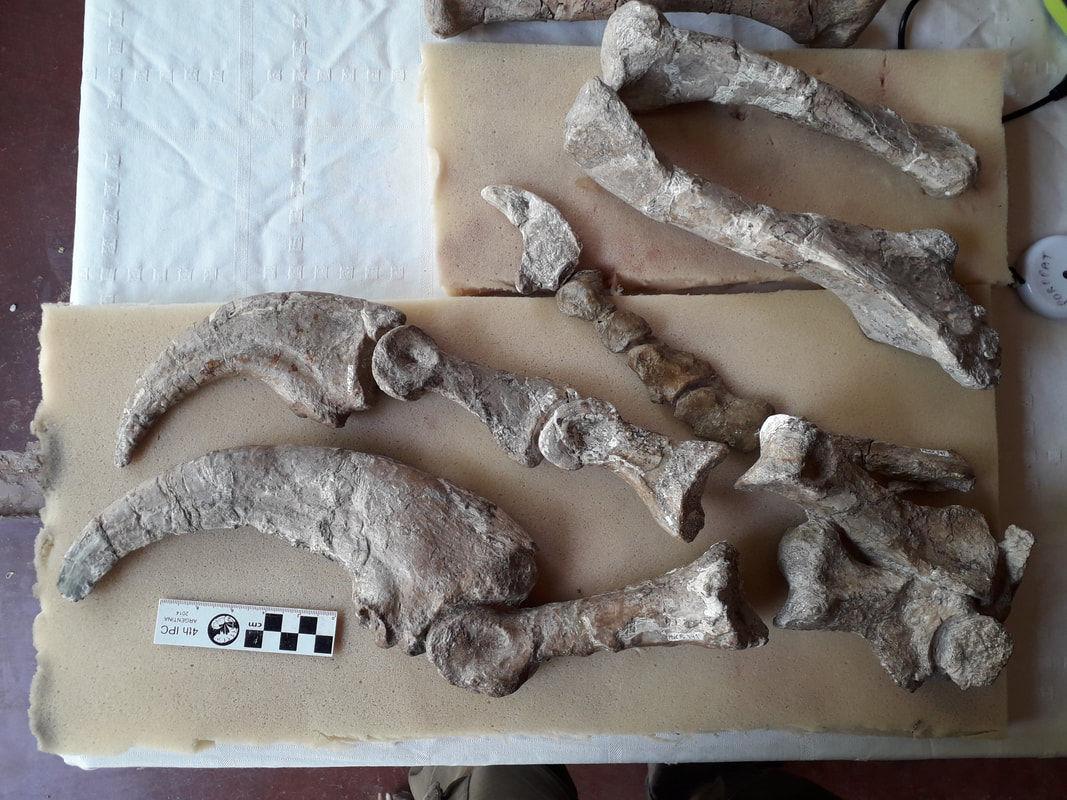
The complete hand of Megaraptor namunhuaiquii, announced in 2004, that proved beyond doubt that the massive claw described as part of the original specimen was from the hand (specifically the first finger), not the foot.
Our understanding of Megaraptor’s true nature did not advance until 2004, when Jorge Calvo and colleagues (including Novas) announced the discovery of a new specimen on the north shore of Lago Barreales. This Megaraptor was more complete than the original, preserving vertebrae from the neck and tail, parts of the shoulder and pelvis, a partial metatarsal and — amazingly — a complete forearm and hand. The latter was critical: a phalanx (finger bone) identical to that from the original Megaraptor specimen was present in the first finger, and right next to it was a huge, sickle-like claw, uncannily like the original! This showed, beyond any doubt, that the massive claw from original specimen did not belong to the foot at all, but was a hand claw. A slightly smaller, yet chunkier, claw was present on the second finger, and a relatively tiny claw tipped the third and final finger. Using both the original specimen and the new one, Calvo and colleagues attempted to work our Megaraptor’s position on the theropod family tree. Despite having the new specimen available, they still found it difficult to place it! They identified some features that Megaraptor shared with carcharodontosaurids (“shark-toothed lizards”), others more in line with far more basal theropods, and others that seemed to be convergent with spinosaurids. These authors ultimately concluded that Megaraptor was unique — that it represented a heretofore unknown group of theropods, characterised by massive, raptorial hands, that was probably not a part of Coelurosauria.
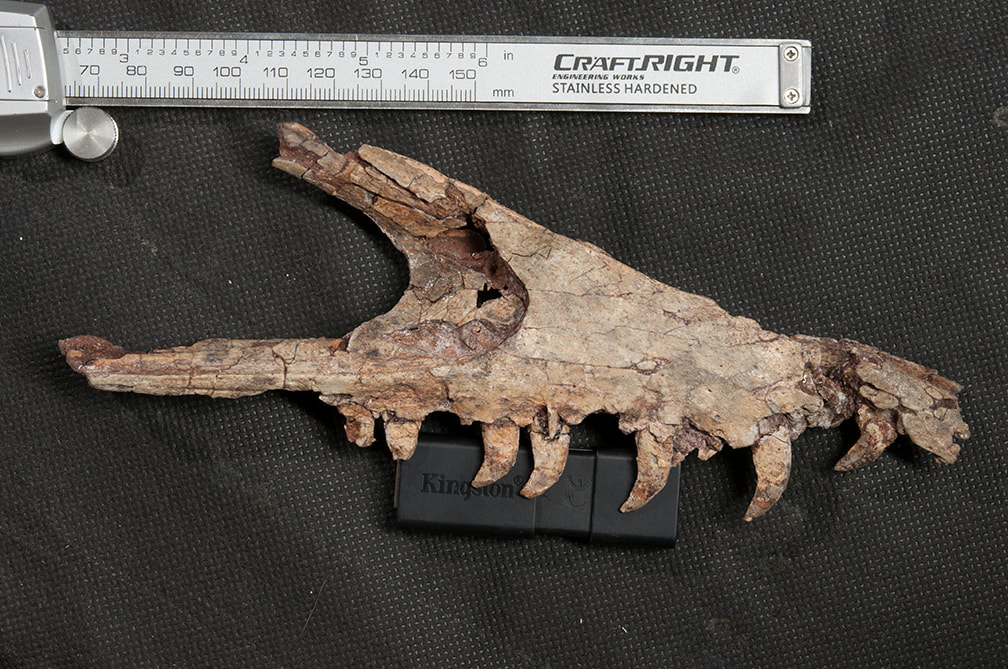
The right maxilla (part of the upper jaw) from the juvenile Megaraptor namunhuaiquii, announced in 2014.
It was to be another decade before a substantial advance in our understanding of Megaraptor itself was made. In 2007, two short papers specifically focused on Megaraptor were published by Juan Porfiri and colleagues: one suggested that it was gregarious (based on rather meagre evidence, in my mind), whereas the other attempted to determine its hunting mode and predatory adaptations based on the 2004 specimen. However, the more important advances to take place between 2004 and 2014 only partially involved Megaraptor itself: instead, the description of several new species, including the Australian Australovenator, allowed Megaraptor to be linked with other theropods around the world, and to the recognition (by Roger Benson and colleagues) of two new groups of theropods, one nested within the other. The less inclusive group was dubbed Megaraptora, and it included the eponymous Megaraptor along with Australovenator, the Japanese Fukuiraptor and the Argentinean Aerosteon and Orkoraptor. The more inclusive group, within which Megaraptora was nested, was termed Neovenatoridae, and allowed the British Neovenator and the Chinese Chilantaisaurus to join the party.
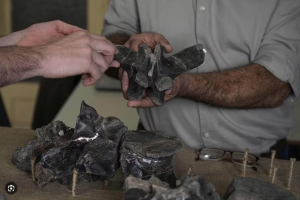
My experience with Megaraptor, and megaraptorids
The three key Megaraptor specimens — the type specimen, the referred specimen with a complete hand, and the juvenile — are held in three separate places within Neuquén Province, despite the fact that two of them are registered in the same collection. The original Megaraptor specimen is held in Plaza Huincul at Museo Carmen Funes (where Anabisetia and Argentinosaurus are also held), the specimen with complete hand is held at the Proyecto Dino Museum on the north shore of Lago Barreales, and the juvenile is held in the Earth Sciences Department at the Universidad Nacional de Comahue. Within a fortnight that was otherwise occupied with the study of ornithopods (and very few technological hiccups, thank goodness), I had seen and studied all three specimens — I spent half a day on the type specimen, almost two full days with the full hand and its associated material, and a rather tight four hours with the juvenile! I came away from this absolutely convinced that the original specimen and the one with a complete hand represented the same species, although I still have a few doubts about the juvenile (although I am convinced it is a megaraptoran: it is very similar to some other megaraptoran species).
All three specimens were a joy to work with. The most exciting for me personally, though, was the one at Lago Barreales. Seeing every single bone in the hand, in exactly the right place, and being able to make fresh observations (and take photographs) of those specimens has helped me to understand just how variable the bones of the megaraptoran hand truly are, which will hopefully enable isolated finger bones to be identified correctly when they come to light.
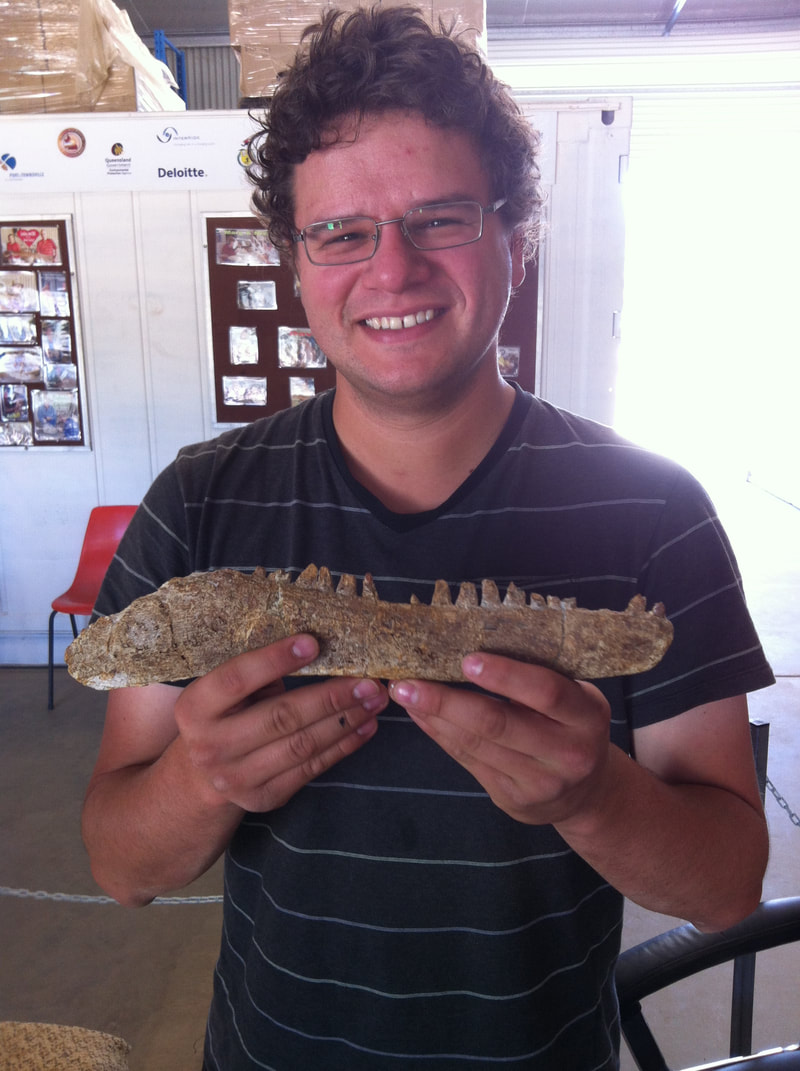
Me in 2012 with the dentary (lower jaw) of Australovenator wintonensis at the Australian Age of Dinosaurs Museum in Winton, Queensland. Yep, I love fossils!
Having studied the remains of Australovenator wintonensis and now Megaraptor namunhuaiquii firsthand, I can attest to how similar they are to one another (with Australovenator being significantly smaller). I can also state that seeing these specimens has been exceedingly useful in my ongoing research on Victorian Cretaceous theropod dinosaurs — some new megaraptoran remains will hopefully be published on from Cape Otway quite soon, and this paper will be greatly enhanced now that I’ve seen so much of Megaraptor!

